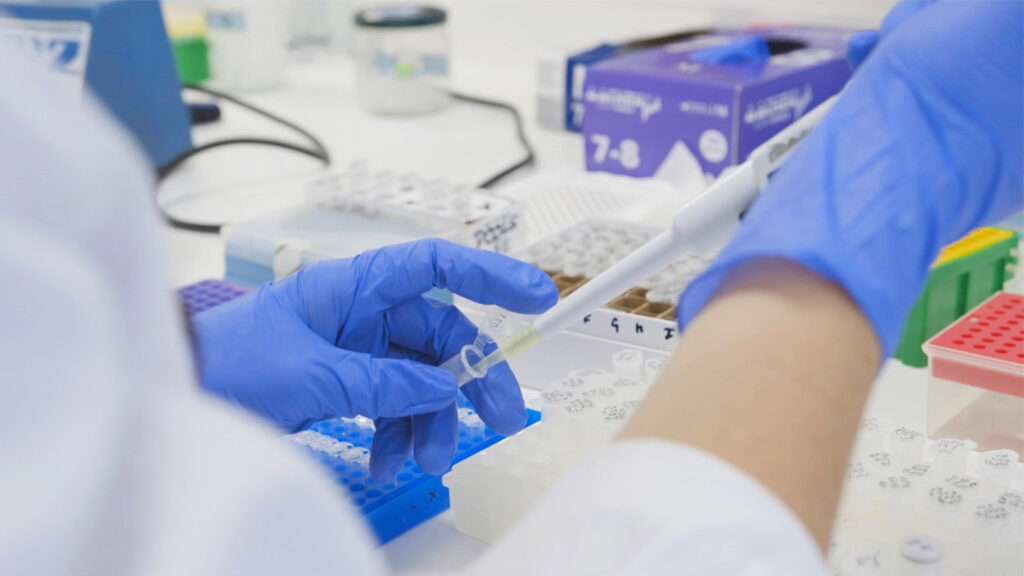In 2019, using genome sequencing technology, the Neurometabolic Diseases research group, led by Dr. Aurora Pujol, ICREA research professor at the Institut d’Investigació Biomèdica de Bellvitge (IDIBELL) and the Center for Biomedical Network Research on Rare Diseases (CIBERER) discovered that malfunction of the lipid enzyme DEGS1 is the genetic cause of a novel disease, the hypomyelinating leukodystrophy-18 (HLD18, OMIM #618404).
This is an ultra-rare disease of the brain white matter, a leukodystrophy, that affects children from the first months of life. These patients have very serious motor and cognitive problems, many of them cannot walk or have never learned to speak, some of them also have eating problems and epilepsy. Most patients die early. To date, researchers have identified only 36 patients in the world with this disease, 7 of whom unfortunately had already died. In this regard, the use of the GeneMatcher platform, which brings together clinicians, geneticists and researchers from around the world interested in studying novel genes and diseases, and the collaborations already established through the CIBERER, such as the collaboration with Dr. Àngels García-Cazorla of the Sant Joan de Déu Children’s Hospital, have been crucial.
Now the researchers have applied functional studies, published in The Journal of Clinical Investigation, to describe important insights into the understanding the HLD18 disease, which may have implications for the management of this and other diseases caused by the imbalance of lipids.
By applying sophisticated microscopy at the ICFO, in collaboration with Dr. Pablo Loza-Alvarez and Dr. Maria Marsal, the researchers were able to demonstrate that DEGS1 is located at the mitochondria-associated endoplasmic reticulum membrane (MAM), a region of the endoplasmic reticulum membrane which is reversibly tethered to mitochondria. This discovery may have an important functional implication, since mitochondria and MAM appear physically disrupted.
According to Laura Planas Serra, predoctoral researcher at IDIBELL and first author of the study: “This investigation also exemplifies how rare monogenic diseases may help elucidate fundamental cellular metabolic functions, and also opens the door to tackle more complex disorders, given the emerging role of DEGS1 in type 2 diabetes and cardiovascular disease”.
The researchers have also embarked on a fundraising campaign to be able to treat the HLD18 patients with Fingolimod (by Novartis), a drug in the market since 2010 for the treatment of Multiple Sclerosis. They have about 9 patients from all over the world (Spain, India, Egypt and the United States) who are interested in enrolling their pilot study, but they cannot treat them since they cannot afford the high cost of the drug, Fingolimod. Currently, this pilot study is their only therapeutic option. The researchers are treating 2 patients (a hospital and the family have covered the cost, respectively) and have very encouraging results. More information and donations here: https://gofund.me/a7487cab
The project has been a collaborative effort between Sant Joan de Déu Children’s Hospital, Hôpital Armand-Trousseau, Institut de Ciències Fotòniques (ICFO), Josep Carreras Leukaemia Research Institute Barcelona, University of Barcelona, Johns Hopkins University School of Medicine, Institut de Recerca Biomedica de Lleida, and Columbia University Medical Center. Furthermore, it would not have been possible without the funding agencies, especially, ‘La Marató de TV3’ Foundation, the Instituto de Salud Carlos III, the URDCat programme, the Hesperia Foundation and the Secretariat for Universities and Research of the Ministry of Business and Knowledge of the Government of Catalonia.

